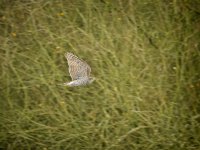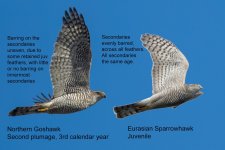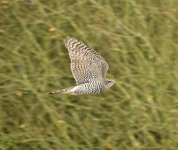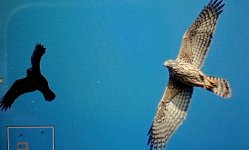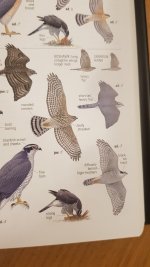-
Welcome to BirdForum, the internet's largest birding community with thousands of members from all over the world. The forums are dedicated to wild birds, birding, binoculars and equipment and all that goes with it.
Please register for an account to take part in the discussions in the forum, post your pictures in the gallery and more.
You are using an out of date browser. It may not display this or other websites correctly.
You should upgrade or use an alternative browser.
You should upgrade or use an alternative browser.
Accipiter , Belgium (1 Viewer)
- Thread starter arran
- Start date
More options
Who Replied?Alexander Stöhr
Well-known member
Hello,
its a female Sparrowhawk imo. Just by gut feeling.
Regarding ageing, I hope for Tom and others to jump in.nd a question from me: does this bird have 2 different generation primaries?
edit: and wow, what a picture! Stunning, what a skilled photographer can achive with modern equipment. Tfs!
its a female Sparrowhawk imo. Just by gut feeling.
Regarding ageing, I hope for Tom and others to jump in.nd a question from me: does this bird have 2 different generation primaries?
edit: and wow, what a picture! Stunning, what a skilled photographer can achive with modern equipment. Tfs!
thanks Arran,
I should have taken the hint, as you wrote Flemish marshes, not Flemish Marshes...
sorry about that,
ps. your username made me think you were British, so I could easily see Flemish Marshes (just off the A34) being a thing in say Norfolk.
cheers,
Gerben
I should have taken the hint, as you wrote Flemish marshes, not Flemish Marshes...
sorry about that,
ps. your username made me think you were British, so I could easily see Flemish Marshes (just off the A34) being a thing in say Norfolk.
cheers,
Gerben
Last edited:
Alexander Stöhr
Well-known member
Hello Gerben,
thanks for your comment!
At first I thought, that this is such a small bird, but then Buttys words came into my mind again: thanks Butty!
And while I still get the feeling of a compact and neckless bird, the features you mentioned cant be overlooked.
Yes, many Goshawks have an even broader and obvious supercilium and more solid dark ear-coverts and some have slightly greyer upperparts, this all is within variation.
Is the irregular barring on the breast a feature against Goshawks normally more parallel barred breast???
I hope for more comments and pictures. Thanks Gerben again!
thanks for your comment!
At first I thought, that this is such a small bird, but then Buttys words came into my mind again: thanks Butty!
And while I still get the feeling of a compact and neckless bird, the features you mentioned cant be overlooked.
Yes, many Goshawks have an even broader and obvious supercilium and more solid dark ear-coverts and some have slightly greyer upperparts, this all is within variation.
Is the irregular barring on the breast a feature against Goshawks normally more parallel barred breast???
I hope for more comments and pictures. Thanks Gerben again!
Torchepot
Well-known member

I showed this to Andrew Butler (who produced the excellent Goshawk flight ID guide)
and he replied
“Nice photo.
I would say male Northern Goshawk in its second plumage ie 2nd or 3rd calendar - 2cy if it was taken last autumn.
I’ve inserted a photo for comparison, of Goshawk v Sparrowhawk in similar positions. I’ve made them similar sizes for illustrative purposes.
At this age, and in this view, the pattern of the secondaries is key.”
and he replied
“Nice photo.
I would say male Northern Goshawk in its second plumage ie 2nd or 3rd calendar - 2cy if it was taken last autumn.
I’ve inserted a photo for comparison, of Goshawk v Sparrowhawk in similar positions. I’ve made them similar sizes for illustrative purposes.
At this age, and in this view, the pattern of the secondaries is key.”
Attachments
Rotherbirder
Well-known member

Nice one Ken, we're getting there! Look at the size of the bill too.First impressions “a big bodied bird”, with a particularly short distance between UTC’s and tail end?
RB
KenM
Well-known member
Got there a long time ago RB……Nice one Ken, we're getting there! Look at the size of the bill too.
RB
Attachments
PYRTLE
Old Berkshire Boy

But doesn't that knock the underside inner secondary barring theory into a cooked hat ( post #8 )......you're image shows evenly well spaced and marked barring across all the secondaries in a young streaked bird. Puzzling, no?Got there a long time ago RB……

I think it wasn't supposed to work for (fresh-plumaged?) juveniles (= vertical streaking on underparts).
EDIT:

 www.birdforum.net
www.birdforum.net
EDIT:

Hawks, Moscow
Hi everyone! I need help with these two hawks, since hawks are always tricky to me. The photo is not mine, it was taken in September 2023 in Moscow. I'm pretty sure that the bigger bird is a goshawk, but not sure about the smaller one. Is it small enough to be a sparrowhawk?
KenM
Well-known member
Think we’ll need to ask an “expert” on that one Pat.👍But doesn't that knock the underside inner secondary barring theory into a cooked hat ( post #8 )......you're image shows evenly well spaced and marked barring across all the secondaries in a young streaked bird. Puzzling, no?
PYRTLE
Old Berkshire Boy

Agree but I don't believe Mr Forsman follows BF.Think we’ll need to ask an “expert” on that one Pat.👍

tconzemi spoke about it in another thread, and Collins guide agrees (the 3rd edition; all previous editions got the pictures wrong, apparently)
Hawks, Moscow
Hi everyone! I need help with these two hawks, since hawks are always tricky to me. The photo is not mine, it was taken in September 2023 in Moscow. I'm pretty sure that the bigger bird is a goshawk, but not sure about the smaller one. Is it small enough to be a sparrowhawk?www.birdforum.net
Attachments
Edns 1-3 all show underside of juvenile inner secondaries the same - barred.the 3rd edition; all previous editions got the pictures wrong, apparently
Torchepot
Well-known member

Alexander (many thanks by the way!) posted this link on a previous thread and I urge anyone with an interest in Goshawk ID to give it a good read.
Northern Goshawk flight identification and ageing in the UK - Revised and updated
Forsman‘s 2016 Flight ID of Raptors of Europe etc. has 11 photos of Goshawk, 5 juvenile, 5 adult and only one sub-adult, it isn’t as comprehensive in detail particularly with the difficult sub-adult plumages (in my opinion).
Northern Goshawk flight identification and ageing in the UK - Revised and updated
Forsman‘s 2016 Flight ID of Raptors of Europe etc. has 11 photos of Goshawk, 5 juvenile, 5 adult and only one sub-adult, it isn’t as comprehensive in detail particularly with the difficult sub-adult plumages (in my opinion).
Last edited:
Rotherbirder
Well-known member

This is by far the easiest plumage to ID Gos in so, not quite yet Ken 😉 !Got there a long time ago RB……
RB
KenM
Well-known member
I’m not biting RB!This is by far the easiest plumage to ID Gos in so, not quite yet Ken 😉 !
RB
Similar threads
- Replies
- 21
- Views
- 1K
Users who are viewing this thread
Total: 2 (members: 0, guests: 2)




